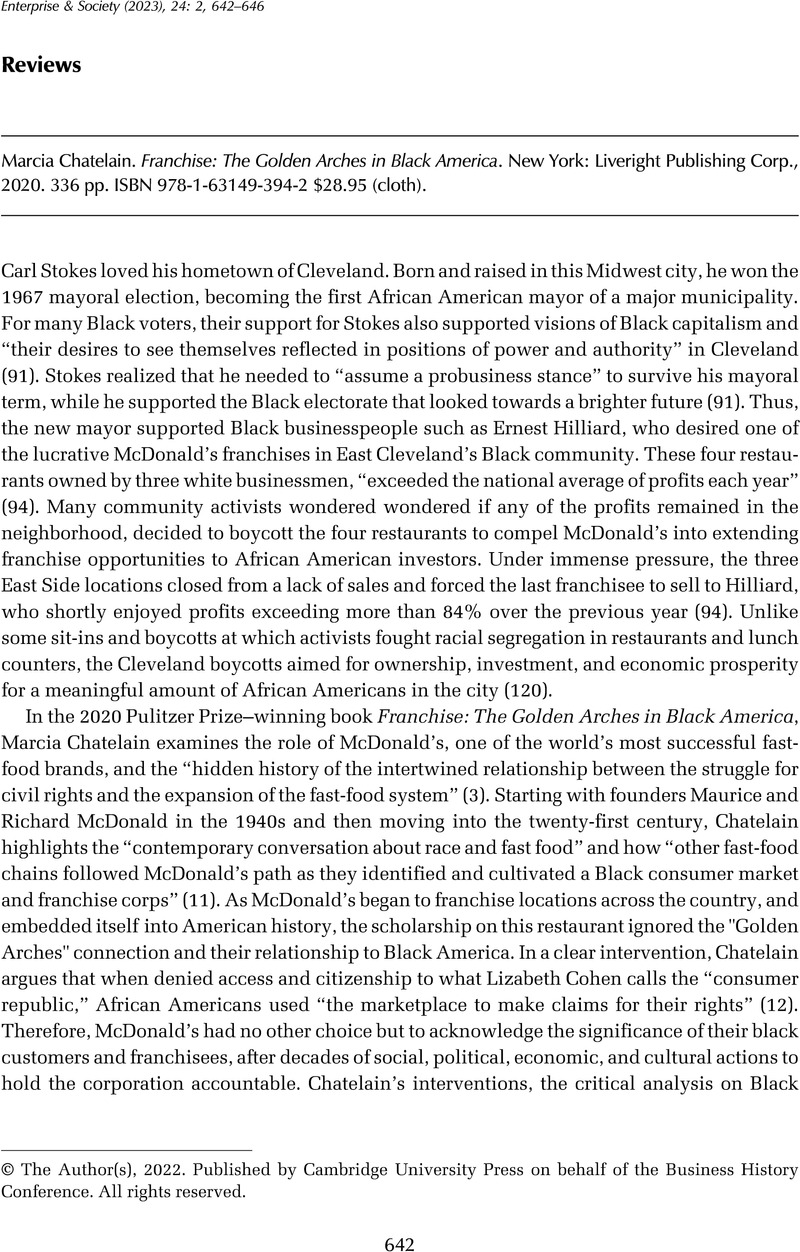No CrossRef data available.
Article contents
Marcia Chatelain. Franchise: The Golden Arches in Black America. New York: Liveright Publishing Corp., 2020. 336 pp. ISBN 978-1-63149-394-2 $28.95 (cloth).
Review products
Marcia Chatelain. Franchise: The Golden Arches in Black America. New York: Liveright Publishing Corp., 2020. 336 pp. ISBN 978-1-63149-394-2 $28.95 (cloth).
Published online by Cambridge University Press: 04 July 2022
Abstract
An abstract is not available for this content so a preview has been provided. Please use the Get access link above for information on how to access this content.

- Type
- Review
- Information
- Copyright
- © The Author(s), 2022. Published by Cambridge University Press on behalf of the Business History Conference. All rights reserved


